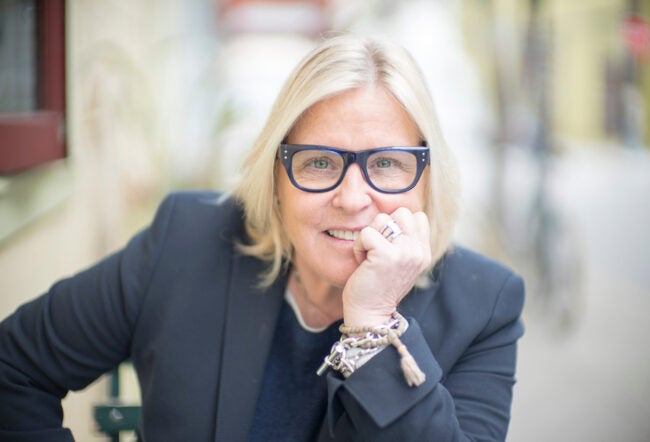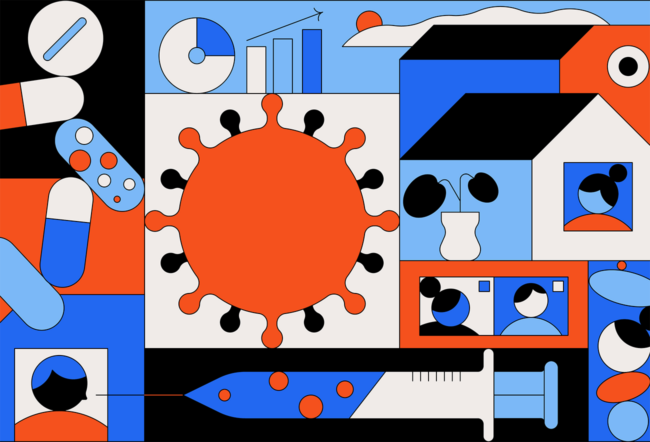Space Tourism. Renewable energy. Computer animation. And not a single dot-com. As the great Bob Dylan once sang, the times, they are a-changin’. The “Eight Great” finalists in the 2003-2004 Wharton Business Plan Competition – the Great Eight, as the organizers call them – want to save the world with solar energy or cutting-edge medical devices, or see it from afar via a reusable space capsule, to name a few of the business plans presented.
Unlike past years, when the bursting of the Internet bubble cast a pall over the world of startups, even those that had nothing to do with the ’net, this year’s Great Eight emerge in an economy that’s showing signs of vitality. Plans for a stock offering by Internet-search company Google have given a much-needed boost to the tech sector. Employment is on the upswing and economic growth has begun to accelerate, suggesting that investors might once again be interested in backing promising early-stage ventures such as those that were presented at Wharton’s Venture Fair, held April 26.
This year’s competition involved almost 700 students from the University of Pennsylvania, including students in 10 of Penn’s 12 professional schools. The eight finalists were chosen from a field of nearly 200 teams; any team that included a Penn student could participate. In addition, the Venture Fair scored a number of firsts this year. For the first time, two undergraduate teams made it to the finals. Likewise, a team from Wharton West, the school’s California campus, appeared for the first time.
The Great Eight made their 20-minute presentations to a panel of venture capitalists, entrepreneurs and even a journalist. The judges included representatives of St. Paul Venture Capital, Goldman Sachs, Canaan Partners, JK&B Partners, Sienna Ventures, Microsoft and Johnson & Johnson. More than 300 professionals were involved as either judges or mentors.
This year’s winner received $20,000 in cash, a trip to make a presentation at the Global Start-up @ Singapore business plan competition and entry into the Wharton Venture Initiation Program – Wharton Entrepreneurial Programs’ mentoring program for student entrepreneurs. The second-place team received $10,000, and the third-place team, $5,000. Each team also received $5,000 worth of legal services and $5,000 worth of accounting and strategy-consulting services.
Here are the eight finalists in alphabetical order. Try to guess who the judges picked, and don’t peek.
BioSpectrum. This biotech company aims to accelerate the search for new drugs. It has devised a faster means of screening proteins that have a role in diseases. As with conventional screens, its technology would test the proteins’ responses to large libraries of chemical compounds. “Understanding proteins enables drug researchers to target more effectively the root causes of disease earlier in the drug-development process, thus saving time and money in a process that currently requires on average 15 years and $800 million,” the team explained in a summary of its plan. BioSpectrum’s technology allows it to miniaturize the chemical reactions required to run screens. That lets it run more screens on the standard-sized plates that drug companies use for the tests and thus reduce waste. Rather than licensing its technology, BioSpectrum would perform screens for drug companies and contract-research companies.
CelfCure. Can the body’s neurological tissues rebuild themselves? With a little help from CelfCure, they may. The biotech company wants to harness what’s called manipulated autologus stem cell therapy, or MAST. In MAST, physicians take cells from a patient’s body, culture them in a lab, load them with drugs, then put them back in the patient. The technology, which has shown promise in research labs, can be used to treat neurological problems such as head and spinal-cord injuries and stroke. So far, it isn’t available for practicing doctors. The problem, said Ajay Bakshi, a neurosurgeon and one of the CelfCure team members, is that “biotech companies don’t have access to patients, and hospitals don’t know how to grow cells.” CelfCure would act as a bridge, providing the cultured cells and techniques for transplantation. “Our business proposition rests on developing MAST technologies for various diseases and making them available for medical use by establishing a centralized laboratory,” the team explains in its summary.
Distributed Resource Imagery. This company wants to use your personal computer when you’re not, borrowing it to make cartoons. DRI, devised by an undergrad team, is as close as any of this year’s finalists comes to being an Internet company. It would use its software and know-how to tie together internet-linked PCs and then lease their combined power to Hollywood animation companies. These days, movie animation is rendered by computers – lots of them. An animator such as Pixar, famous for such hits as Toy Story and Finding Nemo, typically spends tens of millions of dollars a year on an in-house “render farm” of high-powered computers. DRI would let animators outsource their rendering and get rid of their machines. It would pay the PC owners for the right to use their machines when they weren’t.
Greenhands. If this company’s business model is simple – it’s a retailer – its goal is profound. It wants to clean the air, one car at a time. Greenhands would sell environmentally friendly automotive fuels such as propane and natural gas. It would start in the United Kingdom and later move to the rest of Europe and the United States. Initially, it would focus on high-mileage drivers such as cabbies. “These are safe, tried and tested fuels,” said team member Gbenga Kogbe. “They’re also cleaner and cheaper, and our target market – high-mileage drivers – really cares about cheaper.” These fuels haven’t caught on because the big oil companies have so large an investment in producing gasoline and diesel fuel that they are loath to promote them. That indifference equals opportunity for Greenhands, Kogbe said. “The market’s still too small for the big companies,” so they wouldn’t respond to Greenhands’ entry, he argued. Greenhands would start operating in Glasgow, Scotland, which is small enough to be manageable but large enough to show the viability of its business.
IL Aerospace Technologies. ILAT’s target customers would be people who view climbing Mount Everest as passé. The company has developed a means of sending tourists to space, if only briefly. Its “reusable launch vehicle” would carry three people more than 60 miles above the earth, allowing them four minutes of weightlessness before their capsule fell, slowed by a parachute, back to earth. “It’s an experience that can’t be simulated on earth,” said team member Oded Loebl, a pilot who has worked at Israel’s military aircraft test center. ILAT, the Wharton West entry, can build its vehicle for $3.7 million using off-the-shelf technologies, Loebl said. When one judge questioned whether people would be willing to risk their lives for four minutes in space, he had a ready answer: “It costs $60,000 to climb Everest. There’s a five-year waiting list and a one-in-five chance that you won’t make it back alive.”
InfraScan. In much of the world, technologies that detect brain bleeding such as CT scans and MRIs are scarce. That scarcity represents an opportunity for InfraScan. It has developed a handheld device that it calls the HematoScope to detect brain bleeding. The device, about the size of a personal-digital assistant, would allow emergency-room doctors to do quick, cheap scans of patients with head injuries. If a scan came back negative, the physician wouldn’t need to send that patient for a CT or MRI. And that, in turn, would reduce the wait for patients who really needed those far-more-costly technologies. The device could also be used in battlefield triage. “This isn’t just a concept,” said team member Sandeep Naik. “We have a working prototype and have conducted human clinical studies.” The HematoScope grew from a patent filed by Britton Chance, an emeritus professor at the University of Pennsylvania and a pioneer in the field of medical optics. It’s able to detect brain bleeding thanks to the light-absorbing properties of hemoglobin.
Integrated Biometric Solutions. Ever lose your key card when staying at a hotel? Or have you accidentally left it behind when you went for a jog and then had to trudge to the front desk in your shorts and plead for a new one? Integrated Biometric Solution’s fingerprint recognition system would make these sorts of hassles disappear. Instead of using a keycard to enter your room, you’d simply press your fingertip against a scanner. “This technology would also allow you to charge things anywhere in a hotel with your fingertip,” said team member Ian Framson. IBS’ system would cost about $300,000 for a hotel to install, so the company, created by an undergrad team, initially would target luxury chains. If the scanners worked in hotels, they could be rolled out on cruise ships and in commercial buildings.
Solestia. Like the sun, solar-electric technology keeps rising. It may seem like a relic of the 1970s oil crisis, but in the last decade, it has taken off again, with the number of solar installations in the United States increasing by 300%. It would probably grow faster if not for its high upfront cost, said team member Sandra Caruba. Solestia would spur the process by providing lease financing for solar systems. It would offer the financing through existing solar-system installers, piggybacking on their marketing. “Banks look at solar systems and see small-ticket consumer goods that are hard to repossess and redeploy,” Caruba said. “We see good reuse potential.” The underlying technology is stable, which means rooftop panels don’t quickly become obsolete. Several states, including California and New Jersey, offer tax rebates for installation. That represents another source of revenue, in addition to lease payments, for Solestia, Caruba said.
And the winner is … InfraScan, maker of the Hematoscope. Second prize went to CelfCure, and third to BioSpectrum. Distributed Resource Imagery won the Frederick H. Gloeckner Award in Entrepreneurial Studies, which goes to the best undergraduate team.
First prize gives InfraScan a big boost, said team member and founder Baruch Ben Dor. “For the purpose of raising funds, this is extraordinary PR.” Ben Dor had tried raising funds on his own and come away frustrated. “My problem was to get through the first five seconds with a venture capitalist. Winning the competition gives me the first five minutes of his attention. It doesn’t give me his money. But it does give me his attention.”
For the competition, Ben Dor, who has a doctorate in physics, teamed up with Naik and Samonnoi Banerjee, both Wharton MBA candidates. They brought business skills that he lacked. Ben Dor had posted a note at a Wharton website saying he was looking for a chief financial officer. Naik responded, and Ben Dor told him he wanted someone to rewrite his business plan and help him with his pitch to venture capitalists. “Sandeep proposed doing it free of charge and said, ‘We’ll do it as an entry in the Wharton Business Plan Competition.’”
For Naik, it was an opportunity to polish his presentation skills and work on a branch of technology – medical devices – that he already knew well. Before coming to Wharton, he had worked for Medtronic, a Minneapolis medical-device maker. “I’ve always thought that you can have a ground-breaking technology, but if you can’t make it easy to market, it’s never going to take off. I asked Baruch tons of questions. The more I questioned him, the more I found out that the technology is very simple and low cost. It’s mobile. And there’s a huge unmet need.”
The technology also had a personal appeal for Naik, who grew up and attended college in India. “My dad had a stroke about 12 years ago. I remember the day. I was an undergrad, and I got the first glimpse of the healthcare system in a developing country. It took forever for the EMS to get there. My father was partly paralyzed, and the responsiveness of the EMS was a big factor. That’s had a big impact on me. The earlier you can get medical attention, the better.”
If all goes as planned, InfraScan may give future patients in developing countries a better chance of getting early access to an MRI and, perhaps, a better outcome.



